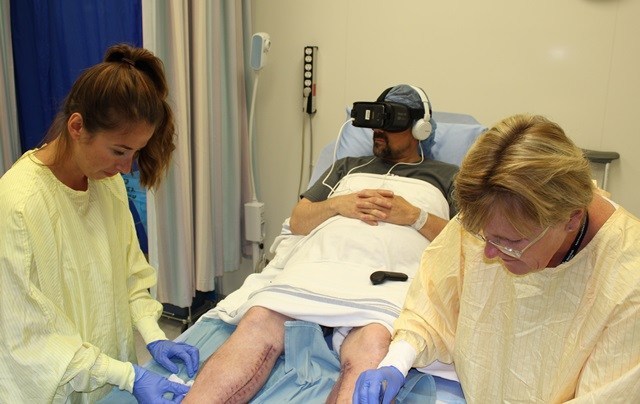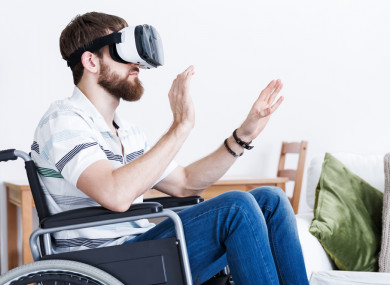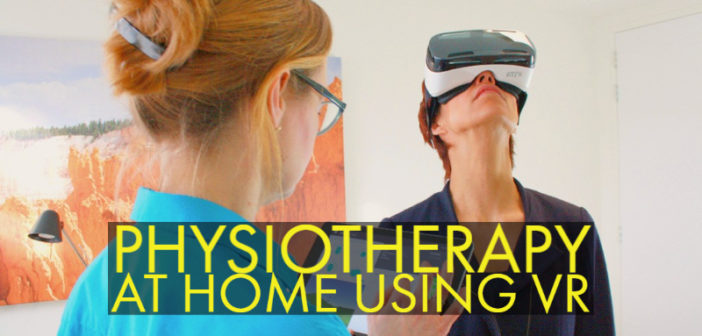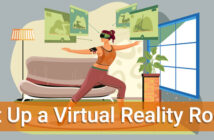Physiotherapy plays an important role in helping millions of people cope with different disabilities and dysfunctions. Physiotherapy treatments include female health, sports, orthopedic, neurological, cardiovascular, pulmonary, and geriatric treatments.
Though physiotherapy is an important part of treatment, it can be quite challenging for people with limited mobility and complex health issues to visit their physiotherapist.
Are you looking for a physiotherapy treatment that you can do from the comfort of your home?
Yes, physiotherapy at home is possible.
With the advent of virtual reality and augmented reality, VR in healthcare makes it possible to continue with your physiotherapy routine from the safety of your own home.
Understanding Virtual Reality Therapy (VRT)
Virtual Reality Therapy (VRT) is the application of virtual reality technology including simulation and interactive environments for therapy.
With the help of Virtual Reality Therapy coupled with 3D Technology physiotherapy patients are now completing their physiotherapy routines from home. Patients wear a VR headset and follow their exercise routine with the help of a virtual avatar. VR Therapy also offers the added advantage of a virtual physiotherapist to patients.

Sophisticated VR Therapy accurately measures the patient’s response to the avatar’s movements and can provide feedback regarding the patient’s capability to meet the exercise routine as well as progress. The information may be stored on a cloud and offers doctors and therapists the facility to access the data when needed.
With the help of recent technological developments, researchers at the University of Warwick were also able to add realistic sound effects and other acoustic sensations that helped improve patient’s response to their coordination with the virtual avatar.
Disorders Treated By VR Therapy
Virtual Reality Therapy (VRT) is used to improve both physical as well as psychological parameters. It also plays an important role in creating a simulation platform for training medical students in real-life situations.
Physical Therapy:
VR therapy combined with physical therapy helps improve patient’s walking skills, balance skills, cognitive functions, and muscle control. With the help of different artificial environments, a wide variety of stimulants, the best VR apps for physical therapy helps patients enhance their motor learning skills. Also, neuro-rehab VR has been particularly helpful in improving neuromuscular strength of patients.
VR based therapy is especially beneficial for treatment of
- Stroke
- Parkinson’s Disease
- Cardiovascular Ailments
- Speech Rehabilitation
- Neuro Rehabilitation.

Psychological Therapy, Phobia Management, and Occupational Therapy:
VR Therapy has been used for several years for reducing stress, anxiety, and phobia. VR uses different sensations including acoustics, moisture or rain, wind, temperature differences, olfactory sensations, tactile sensations, and tilting sensations to recreate stimulations that the patient’s experience to trigger real-life anxiety.
With the help of this exposure therapy, patients are slowly but steadily able to cope with traumatic situations which cause different types of phobias, PTSD, and other psychological disorders.
VRET (Virtual Reality Exposure Therapy) has been quite helpful in treating psychological disorders like:
- PTSD: Post Traumatic Stress Disorder
- Anxiety Disorders
- Autism
- Sleep Disorder
- Depression
- ADHD: Attention Deficit Hyperactivity Disorder
- Eating disorders
- ADD: Attention Deficit Disorder
- Obsessive-Compulsive Disorder (OCD)
- Acrophobia (fear of heights)
- Pteromerhanophobia (fear of flying)
- Agoraphobia (fear of places, especially public places)
- Glossophobia (fear of public speaking)
- Arachnophobia (fear of spiders)
- Stage fright

Pain Management:
Cedars-Sinai, a non-profit hospital in Los Angeles has been actively using VR technology to help patients mitigate anxiety problems and also for reducing chronic pain disorders. According to their research, patients using VR therapy have noted a 24% drop in their pain levels.
With the help of motion capture, 3D technology, and Virtual Reality, physiotherapists soon shall be able to design customized VR therapy platforms for their patients. The future of physiotherapy definitely belongs to VR therapy!




